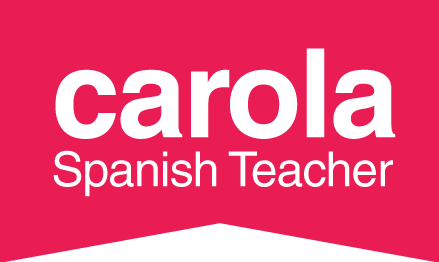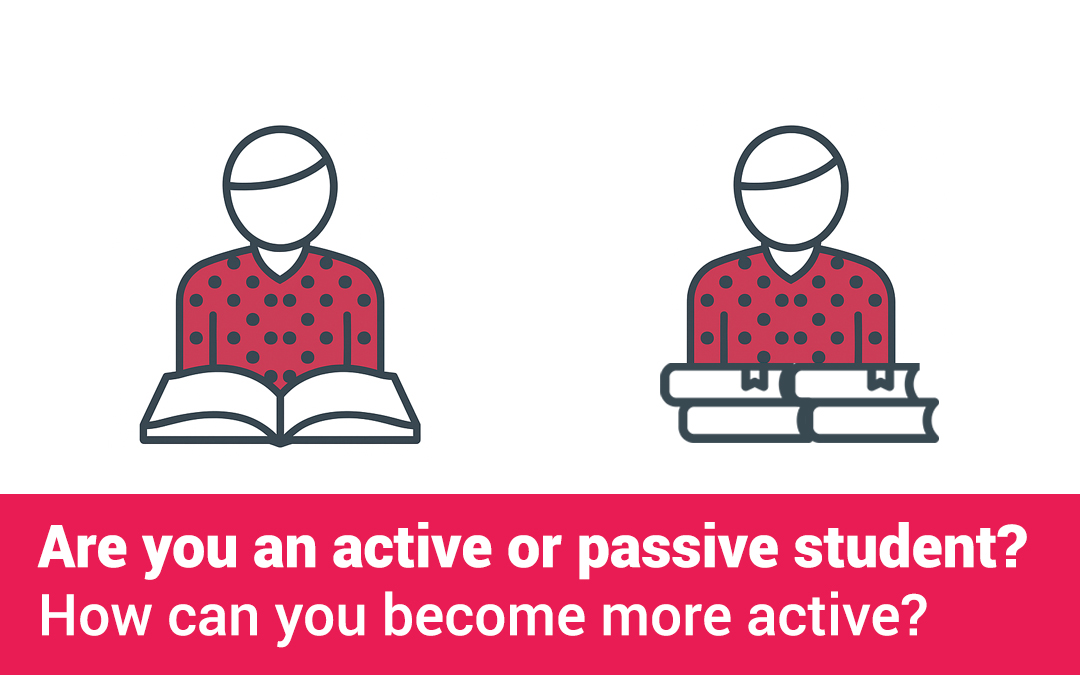Learning Spanish isn’t just about what your teacher explains or what’s written in the textbook.
It’s also about your attitude, your habits, and the way you engage with the language.
There’s a big difference between passive and active students — and this difference can completely change how fast (and how well) you learn.
🔵 Passive Students: Waiting for learning to happen
Passive students usually:
- Attend class and listen but rarely ask questions or participate much.
- Do homework (sometimes) but don’t go beyond it.
- Think: “If I just go to class, I will learn eventually.”
- Avoid speaking unless they’re forced to.
- Often feel frustrated because they understand more than they can say.
- Wait for the teacher to correct everything or explain things again.
🧱 The result? Progress is slow. These students depend only on the classroom for input and often forget things between lessons.
🟢 Active Students: Making learning their own
Active students take ownership of their learning. They:
- Participate actively in class: ask questions, try to use new expressions, repeat aloud.
- Take notes, highlight key phrases, and review them regularly.
- Don’t wait for the teacher — they look things up, explore on their own, and take initiative.
- Speak, even if they make mistakes.
- Practise outside of class: with podcasts, short conversations, apps, videos, or writing.
💪 They turn input into output: what they hear, they try to use.
They don’t just consume the language — they produce it.
🧠 The result? Faster progress, more confidence, and better long-term memory.
🟡 How can you become a more active student?
Here are some realistic, easy steps to shift from passive to active learning — no matter your level:
✅ 1. Be curious and ask questions
If you don’t understand a word, a tense, or a phrase… ask!
- Write it down and ask your teacher.
- Look it up and find examples of how it’s used.
- Try to use it in a sentence the next day.
📝 Don’t just say: “I’ll wait until the next class” — be curious now.
✅ 2. Use new words immediately
When you learn a new expression, use it as soon as possible:
- In class
- In a message to a classmate
- When ordering food
- When speaking to a Spanish neighbour
🌱 Words become part of your vocabulary when you use them, not just when you understand them.
✅ 3. Set personal goals
Teachers have lesson plans — but you can also set goals:
- “This week I want to talk about my job in Spanish.”
- “I will practise the past tense.”
- “I’ll ask 3 questions in class today.”
🎯 These small goals keep you focused and motivated.
✅ 4. Create habits outside the classroom
You can’t speak fluently by only learning 2–3 hours a week. You need daily contact with the language — even just 10 minutes a day!
Try this routine:
- 🎧 Morning: Listen to a Spanish podcast or song while getting ready.
- 📖 Afternoon: Read 1 short article or social media post in Spanish.
- ✍️ Evening: Write 2–3 sentences in a notebook about your day.
- 🗣 Weekend: Have a short conversation with a local or tandem partner.
💬 These mini-habits turn passive knowledge into active skills.
✅ 5. Accept mistakes as part of learning
Active students don’t fear mistakes — they see them as proof that they’re trying.
Try saying things like:
- “No sé si está bien dicho, pero lo intento.”
- “¿Así se dice?”
- “¿Me puedes corregir, por favor?”
🧩 Every correction brings you one step closer to fluency.
✅ 6. Track your progress
Keep a simple learning journal:
- New words you’ve learned
- Mistakes you made and corrected
- Sentences you want to use
- Feelings or reflections after class
🔁 Reviewing this helps you notice your improvement — even when progress feels slow.
✅ 7. Change your identity
Tell yourself:
👉 “I’m not just learning Spanish. I’m becoming a Spanish speaker.”
This change of mindset motivates you to behave like someone who uses Spanish — not just someone who learns about it.
💡 Final Message
🔄 Passive students wait for progress.
⚡ Active students create progress.
The good news is: You can decide which one you want to be.
No one speaks fluently from day one. But if you take action, get involved, and practise consistently, you will become confident and capable in Spanish.
🌟 So, don’t just go to class. Live the language. Use it. Be brave. Be active. ¡Vamos!

